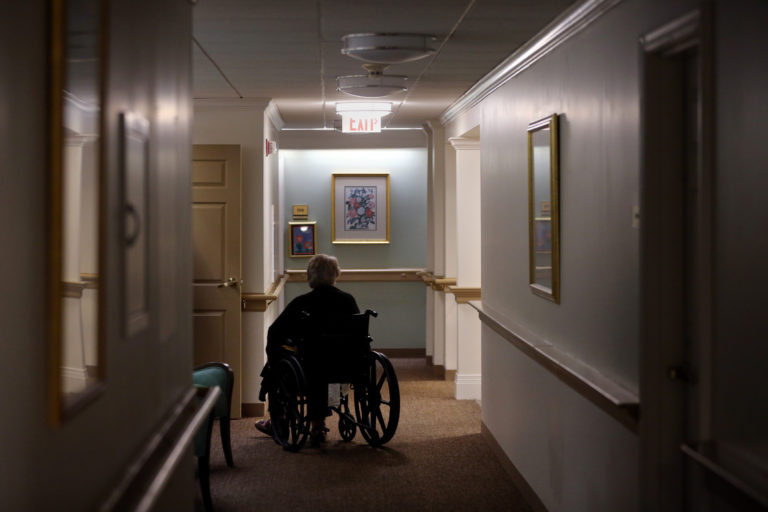On Monday, the Biden administration has finalized new nursing home staffing rules, requiring thousands of facilities to hire more nurses and aides. These rules was prompted by the disproportionate deaths from COVID-19 in long-term care facilities, and is the most substantial changes in over three decades. It aims to address long-standing issues such as sparse staffing, which can lead to missed diagnoses, severe bedsores, and frequent falls.
Vice President Kamala Harris stated that these changes will result in more staff for residents, potentially reducing ER visits and increasing independence. When the regulations are fully enacted, 4 in 5 homes will need to expand their payrolls. Many facilities already meet or are close to meeting the minimum staffing levels, according to a CMS estimate.
The rules focus on staffing levels for registered nurses (RNs), licensed practical nurses (LPNs), and certified nursing assistants (CNAs). Despite a 27% increase in wages since February 2020, nursing homes continue to face challenges in attracting and retaining staff due to competition from higher-paying positions in hospitals, retail, and restaurants. On average, nursing home registered nurses earn $40 per hour, LPNs make $31 per hour, and nursing assistants receive $19 per hour, based on the latest data from the Bureau of Labor Statistics.
The Centers for Medicare & Medicaid Services (CMS) estimated that the new rules will cost $6 billion annually. However, the plan does not include any additional payments from Medicare or Medicaid, the primary insurers for most residents, which means that any increase in wages would need to be covered by owners or existing facility budgets.
The American Health Care Association criticized the rules, calling them unreasonable and stating they create an impossible task for providers. However, labor unions representing nurses praised the changes as a long-overdue improvement.
The recent regulations replace a vague federal requirement dating back to the 1980s, which mandated nursing homes to have sufficient staffing to meet residents' needs. Federal records indicate that in practice, inspectors seldom classified insufficient staffing as a significant violation, potentially leading to penalties.
Under the new rules, nursing homes must provide an average of at least 3.48 hours of daily care per resident within two years. According to a KFF analysis, about 6 in 10 nursing homes are already operating at that level. Additionally, an RN must be on duty at all times on weekends or overnight. Presently, CMS mandates a minimum of eight continuous hours of RN presence daily and requires a licensed nurse of any level to be on duty 24/7. A report from the inspector general revealed that nearly a thousand nursing homes failed to fulfill these fundamental requirements.
The regulations provide nursing homes with some leeway before they must adhere to more detailed standards. Within three years, the majority of nursing homes will be required to offer daily RN care amounting to at least 0.55 hours per resident and 2.45 hours from aides.
Nursing homes located in rural areas will have a longer timeline to meet these staffing requirements. Within three years, they must satisfy the overall staffing criteria and the 24/7 RN requirement. Although there was some confusion within CMS, as its press materials indicated that rural homes would have five years, the CMS rule specifies that rural homes have four years to achieve the RN and nurse aide thresholds.
According to the new regulations, the typical nursing home, with approximately 100 residents, would need to have at least two RNs on duty daily, along with 10 or 11 nurse aides, as per the administration. Nursing homes could meet these requirements by employing two additional workers, who could be RNs, licensed vocational nurses, or aides.
Nursing homes can apply for a hardship exemption from these minimums if they are located in areas with low numbers of nurses or aides and can demonstrate sincere efforts to recruit staff.
Advocates for nursing home residents have long been urging CMS to adopt a higher standard than what was ultimately decided. A study commissioned by CMS in 2001 revealed that the quality of care improved with staff increases up to 4.1 hours per resident per day, nearly a fifth higher than what CMS will require. However, the consultants hired by CMS for the new rules did not consider these earlier findings when evaluating their options.
CMS stated that the endorsed payment levels were considered more financially viable for nursing homes. However, this statement did not alleviate the ongoing debate regarding the number of individuals willing to work in these facilities at existing wage rates and the actual financial challenges faced by nursing home owners.
Some experts, such as John Bowblis, emphasize the need for increased Medicaid payments to nursing homes to prevent facility closures. He also cited workforce shortages and the challenges of hiring in a low-unemployment environment as a detrimental factor. However, researchers have questioned the extent of financial hardship claimed by the industry, with some suggesting that profits may have been diverted to owners through inflated rents and fees.
In a March publication, the National Bureau of Economic Research reported that an estimated 63% of profits were covertly redirected to owners. This was achieved through inflated rents and other fees paid to companies owned by the investors of the nursing homes.
Charlene Harrington, a professor emeritus at the University of California-San Francisco, has criticized the nursing home industry for prioritizing profits over adequate wages, benefits, and working conditions for staff, which can lead to neglect and harm to residents. These issues highlight the ongoing challenges in the long-term care industry and the need for reforms to ensure both financial sustainability and quality of care.
